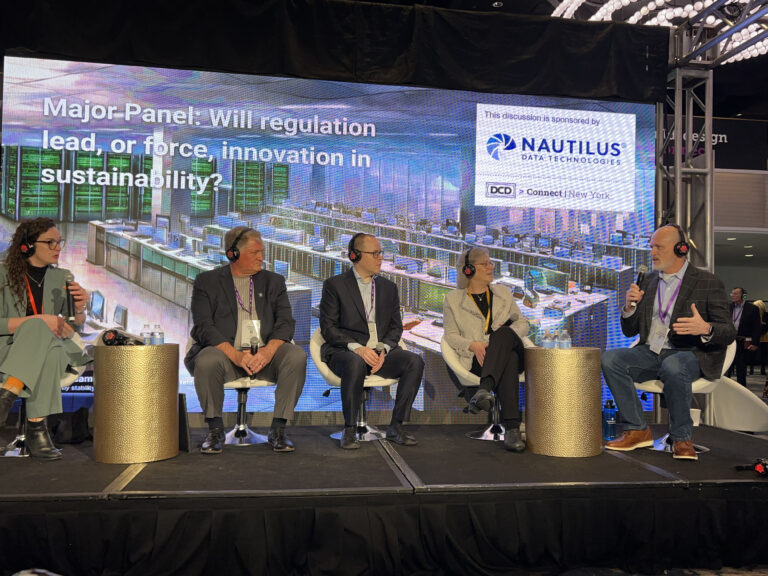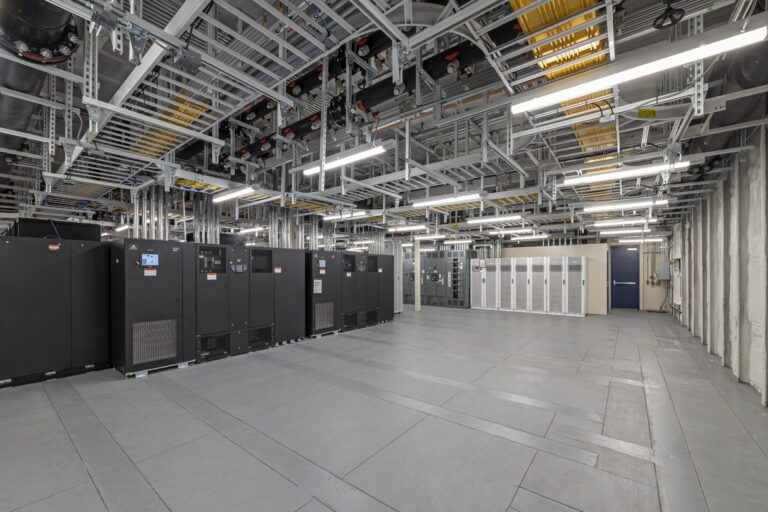James L. Connaughton, President and CEO, Nautilus Data Technologies, speaks exclusively with Hannah Jo Uy on the company’s patented water cooling technology and the future of data centres…
What drove the company to pursue this approach?
The company was formed five years ago by a group of engineers and information technology executives with a proposition that current methodology for air conditioning data centres is utterly unsustainable, when it comes to the future computing that lies ahead. You have to rethink the right building envelope for the cooling of thousands of servers. Our design criteria was how do you accomplish direct water cooling at the lowest capex with the lowest opex and with the smallest environmental footprint. And to do it in a way that can be applied anywhere in the world. I say this because there are some clever niche applications that are specific to particular geographies. The other piece of our mission was to do this in a way that could help accelerate access to modern data services by people in emerging economies.
Can you highlight the operational benefits of these solutions? In your opinion, why are current data centres inefficient?
We improve the energy efficiency of the cooling system by 40–80%. The industry average power usage effectiveness (PUE), according to the U.S. Department of Energy, is about 1.7. New data centres are doing better. We are 80% more efficient than the industry standard and about 30% more efficient than some of the newer designs. We are also able to accomplish this at about half the possible expense. The more efficient data centres accomplish that at a higher capex. Our solution also uses a lot less material. That is just the energy efficiency of the cooling system, which means our net energy efficiency for the whole data centre is 30-40%.
Secondly, we don’t rely on potable water to run an evaporative cooling system. We lower consumption and eliminate the burden on waste water treatment systems. Next, we don’t need to abuse any chemical refrigerants, greenhouse gases and ozone-depleting substances.
Finally, because we are efficient in our cooling, we can handle three times, or more, the number of computers and servers in the same space, hence, our real estate efficiency is better. Also, we want quiet and cool; it’s an attractive environment for data centre operations.
Ironically, air conditioning is very inefficient and imposes a big burden on public water systems. Water cooling doesn’t consume water. The great advantage of our systems is that its pumps and pipes, the atmospheric intrusion is significantly diminished as opposed to air-handling units. Water cooling by any measure, is a lot more energy efficient than evaporative air cooling systems. The hardest places to cool data centres are in the equatorial region. The Middle East is hot and dry, the Pacific like Singapore is hot and wet. Water cooling is ideally suited for cooling data centres in the region compared to air conditioning methods currently being used.
In a place like the Middle East, we have an advantage. Our cooling system can efficiently generate hot water that can lower the cost of desalination, or other industrial applications. We have the advantage of co-location with other industrial infrastructure to improve efficiency. We are designed to be mega modular, in that we pre-fabricate what we do and assemble it on site, systems are simpler and the process of building a data centre is faster.
Water cooling for heat exchange has been used for over 100 years. Why did data centres not follow this methodology?
Several of our team, including me, come from other sectors. Water cooling is traditional for heat exchange. When we came to bring expertise to data centre cooling, we were surprised that data centres did not employ that technique. Data centres became an arm of real estate development. Techniques adapted for data centres worked and innovation stopped. It worked for a lot of engineering and vendors that are heavily invested in the approach, and now everyone uses it.
We classically are entering the market with a much more effective product that takes engineering skill and production skill and does it at a scale and reliability that data centres require. We made the investment to figure all that out. What’s interesting is, as indicated, the system’s much simpler and more reliable to operate. It delivers a very reliable cooling regardless of the load in the server rack. We can support configurations of 120 kilowatts of load, which means we can have high performance computing, [which is] widely commercially available and affordable.
Do you need regulations to encourage uptake of this solution in the market?
I am an ardent practitioner of free market environmentalism. I believe if you can invent a technology that delivers the same or better performance at the same or lower cost in terms of environmental impact, you can accomplish a lot more, faster. We are an example of that. We make sense economically, operationally and environmentally. We don’t need help from the government, because we have a better product…. There is no doubt in my mind that the next data centres will be water cooled.
We have had a high level of interest from all the major players, who are waiting the construction of our first facility to look at the commercial operability of what we are doing and that includes a number of entities that will be customers in the first production. We do have to educate on an enterprise-toenterprise basis.


